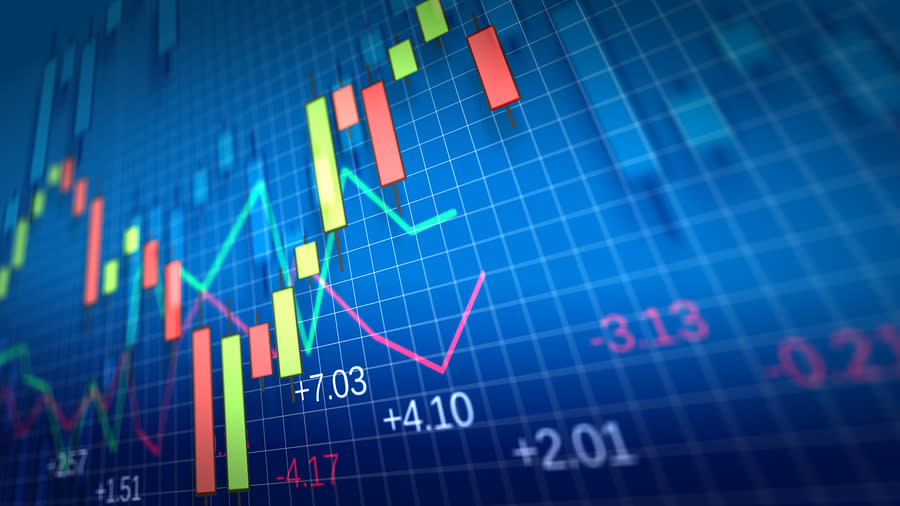Improve Your Retirement Income with These 3 Top-Ranked Dividend Stocks

Here's a revealing data point: older Americans are scared more of outliving wealth than of death itself.
Also, retirees who have constructed a nest egg have valid justifications to be concerned, since the traditional ways to plan for retirement may mean income can no longer cover expenses. Some retirees are now tapping their principal to make a decent living, pressed for time between decreasing investment balances and longer life expectancies.
In today's economic environment, traditional income investments are not working.
In the past, investors going into retirement could invest in bonds and count on attractive yields to produce steady, reliable income streams to fund a predictable retirement. 10-year Treasury bond rates in the late 1990s hovered around 6.50%, whereas the current rate is much lower.
While this yield reduction may not seem drastic, it adds up: for a $1 million investment in 10-year Treasuries, the rate drop means a difference in yield of more than $1 million.
Today's retirees are getting hit hard by reduced bond yields - and the Social Security picture isn't too rosy either. Right now and for the near future, Social Security benefits are still being paid, but it has been estimated that the Social Security funds will be depleted as soon as 2035.
So what's a retiree to do? You could cut your expenses to the bone, and take the risk that your Social Security checks don't shrink. Or you could find an alternative investment that provides a steady, higher-rate income stream to replace dwindling bond yields.
Invest in Dividend Stocks
We feel that these dividend-paying equities - as long as they are from high-quality, low-risk issuers - can give retirement investors a smart option to replace low-yielding Treasury bonds (or other bonds).
Look for stocks that have paid steady, increasing dividends for years (or decades), and have not cut their dividends even during recessions.
One approach to recognizing appropriate stocks is to look for companies with an average dividend yield of 3% and positive average annual dividend growth. Numerous stocks hike dividends over time, counterbalancing inflation risks.
Here are three dividend-paying stocks retirees should consider for their nest egg portfolio.
BNP Paribas SA (BNPQY) is currently shelling out a dividend of $1.75 per share, with a dividend yield of 5.85%. This compares to the Banks - Foreign industry's yield of 4.56% and the S&P 500's yield of 1.75%. The company's annualized dividend growth in the past year was 10.36%. Check BNP Paribas SA (BNPQY) dividend history here>>>
Dick's Sporting Goods (DKS) is paying out a dividend of $1 per share at the moment, with a dividend yield of 3.14% compared to the Retail - Miscellaneous industry's yield of 0% and the S&P 500's yield. The annualized dividend growth of the company was 105.13% over the past year. Check Dick's Sporting Goods (DKS) dividend history here>>>
Currently paying a dividend of $0.12 per share, Evolution Petroleum (EPM) has a dividend yield of 5.89%. This is compared to the Oil and Gas - Exploration and Production - United States industry's yield of 0% and the S&P 500's current yield. Annualized dividend growth for the company in the past year was 20%. Check Evolution Petroleum (EPM) dividend history here>>>
But aren't stocks generally more risky than bonds?
Overall, that is true. But stocks are a broad class, and you can reduce the risks significantly by selecting high-quality dividend stocks that can generate regular, predictable income and can also decrease the volatility of your portfolio compared to the overall stock market.
An upside to adding dividend stocks to your retirement portfolio: they can help lessen the effects of inflation, since many dividend-paying companies (especially blue chip stocks) generally increase their dividends over time.
Thinking about dividend-focused mutual funds or ETFs? Watch out for fees.
If you're interested in investing in dividends, but are thinking about mutual funds or ETFs rather than stocks, beware of fees. Mutual funds and specialized ETFs may carry high fees, which could lower the overall gains you earn from dividends, undercutting your dividend income strategy. Be sure to look for funds with low fees if you decide on this approach.
Bottom Line
Pursuing a dividend investing strategy can help protect your retirement portfolio. Whether you choose to invest in stocks or through low-fee mutual funds or ETFs, this approach can potentially help you achieve a more secure and enjoyable retirement.
Want the latest recommendations from Zacks Investment Research? Today, you can download 7 Best Stocks for the Next 30 Days. Click to get this free report
BNP Paribas SA (BNPQY) : Free Stock Analysis Report
DICK'S Sporting Goods, Inc. (DKS) : Free Stock Analysis Report
Evolution Petroleum Corporation, Inc. (EPM) : Free Stock Analysis Report

 Yahoo Finance
Yahoo Finance 